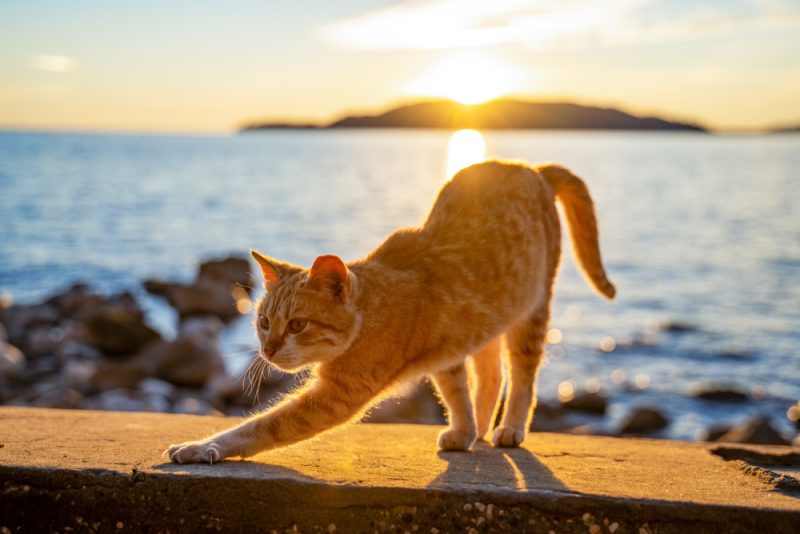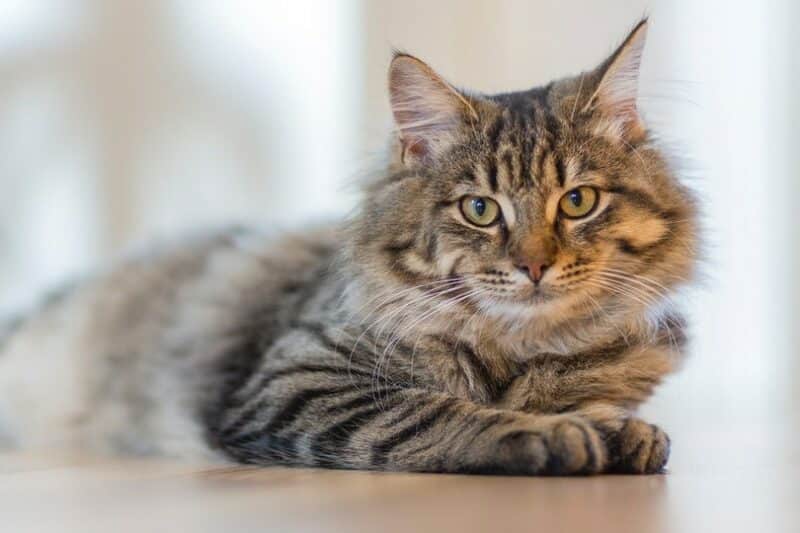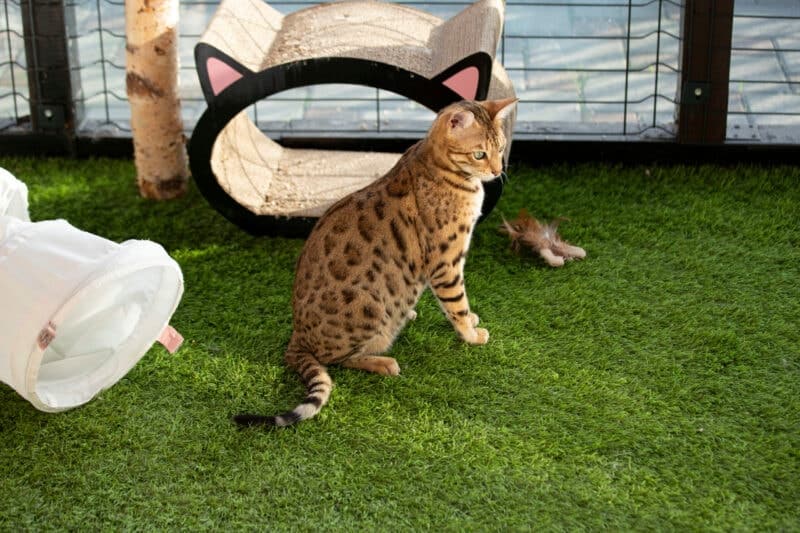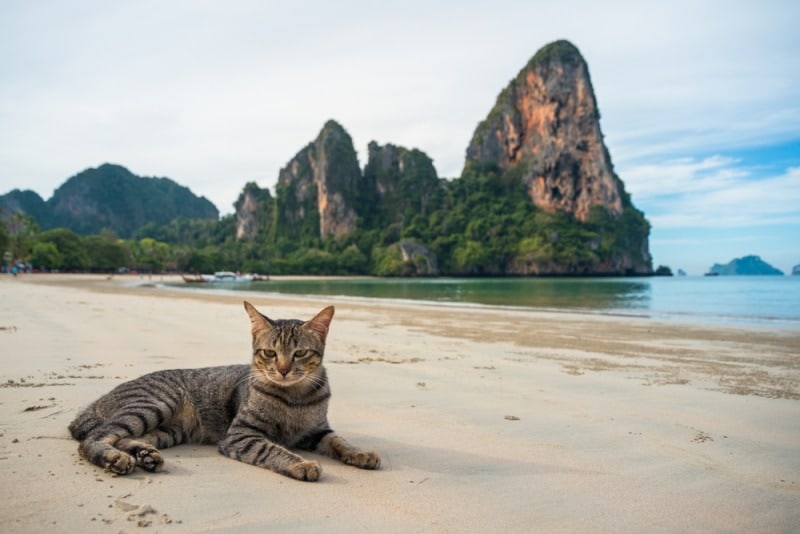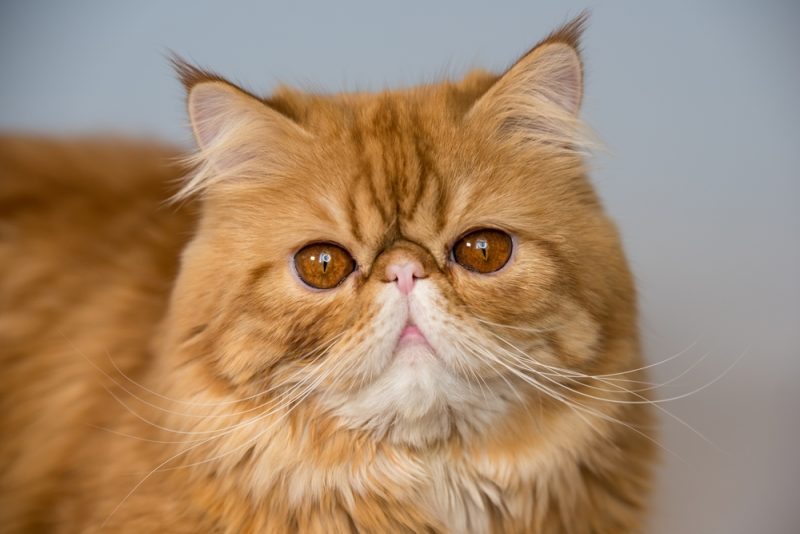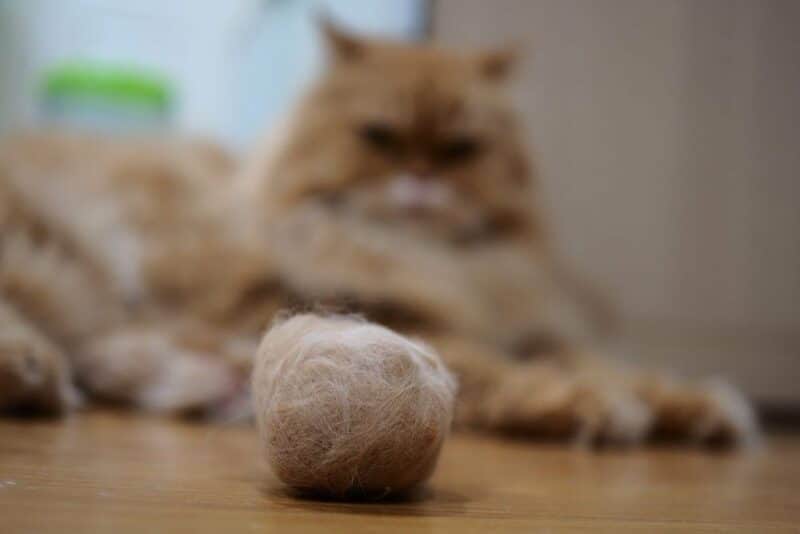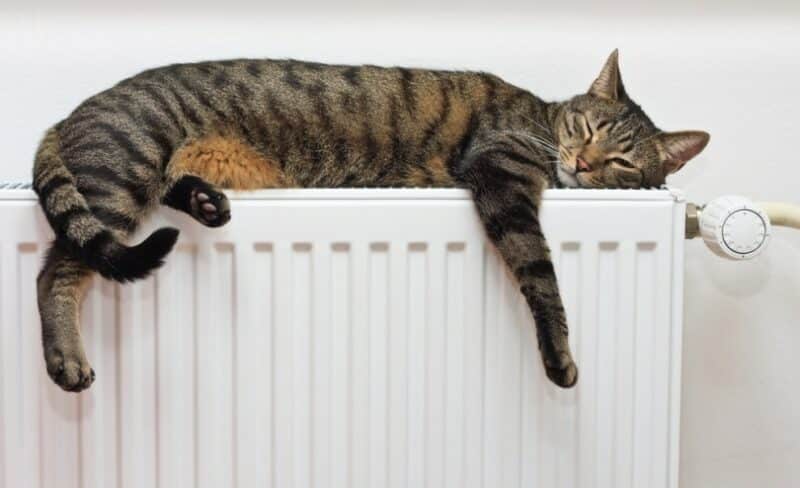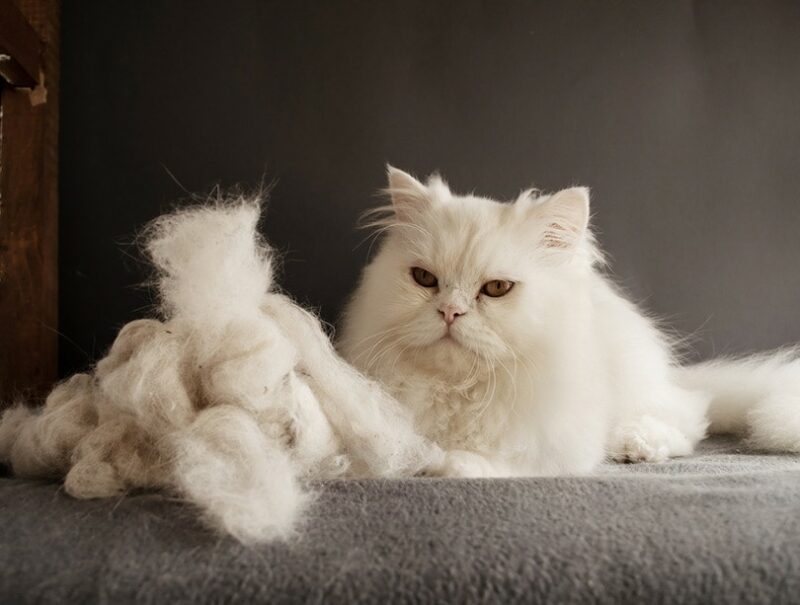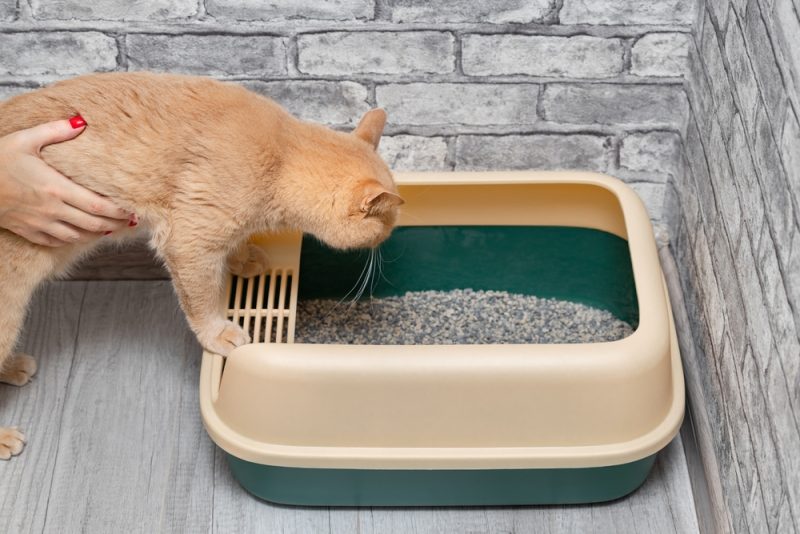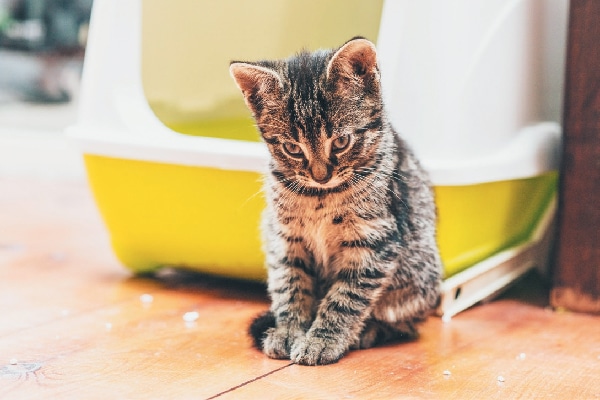In this article
View 2 More +Due to their desert-dwelling ancestors, cats are often believed to not be affected by hot weather. While their normal body temperature is higher than our own—101.0°F to 102.5°F—cats are no better at handling overly hot weather than humans are. Cats are also at risk of overheating or developing heatstroke, especially if they don’t have a way to cool down.
We put together this guide to teach you how to recognize the signs of overheating in cats. On hot days, keep an eye on your cat and provide plenty of cool areas for them to shelter in.

Can Cats Overheat?
Cats can be incredibly self-sufficient. They’ll keep themselves clean, find the warmest spot to stay comfortable, and even keep themselves cool in summer. Their self-sufficiency does have a downside, though. It makes it easy for us to believe that cats aren’t bothered by the heat at all.
While they’re less likely to jump into a cold swimming pool to cool off, cats have their own ways of staying comfortable.
Unfortunately, cats can and do overheat. Despite their higher body temperature, they’re just as bad at handling long, hot summers as we are. There are also times when they can overestimate how well they can handle the heat or even how long they’ve spent outside.
Overheating is just as dangerous for cats as it is for us, and you’ll need to pay attention to the following signs to know when you need to help your cat cool down:
- Dark-red gums
- Elevated temperature
- Lethargy
- Panting
- Rapid heartbeat
- Restlessness
- Vocalization
If you notice these signs, you may need to call or visit a veterinarian to make sure your cat doesn’t suffer from dehydration or severe heat stroke.
If you need to speak with a vet but can't get to one, head over to PangoVet. It's an online service where you can talk to a vet online and get the advice you need for your pet — all at an affordable price!


The 4 Ways Cats Keep Themselves Cool
Cats have a knack for taking care of themselves, and this includes knowing how to keep themselves cool. They might need assistance from you now and then, but here are a few ways that cats regulate their temperature.
1. Grooming
Cleaning their fur isn’t the only reason that cats are always grooming themselves. In summer, you might notice that your cat grooms themselves much more often. Though not proven to be the case, some have suggested it may be a way for them to keep themselves cool, as the saliva that they spread on their fur may help with thermoregulation.
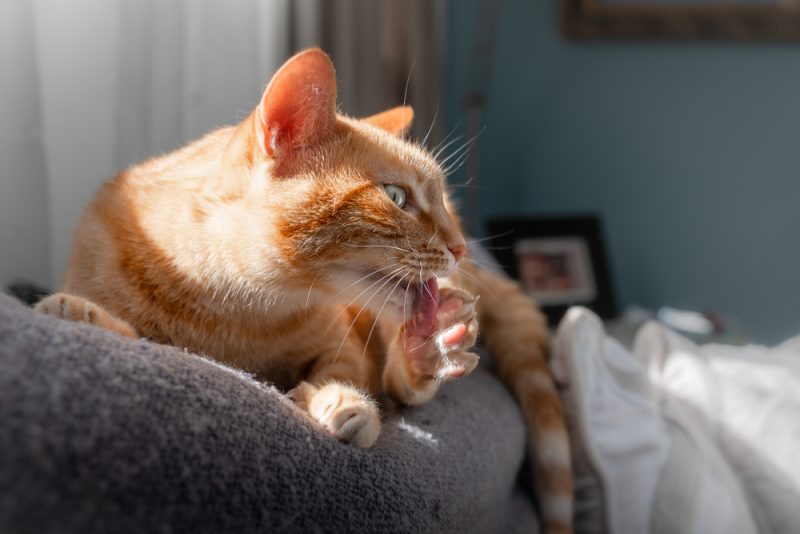
2. Panting
Cats will pant just like dogs do to cool down, but it’s not one of the first solutions that they try. Usually, when you notice that your cat is panting, it’s because they’re already too hot. While dogs will always pant to cool themselves down, it’s often a bad sign when cats do it. If you do see your cat panting, you should help them cool down.
3. Sleeping More
One of the ways that cats self-regulate their temperature is by limiting movement or slowing down on days of extreme weather. If your cat is cold, for example, they’ll find somewhere warm—like your lap—and curl up in a tiny ball to conserve heat.
Similarly, in summer, cats have strategies to stay cool. While they’re much less likely to seek you out as a cool spot—cuddles are just too warm!—your cat will find a nice shady spot and stretch out for a nap. You’ll likely find your cat sleeping through the hottest hours of the day and then waking up and getting up to their usual mischief in the evening when it’s cooler.
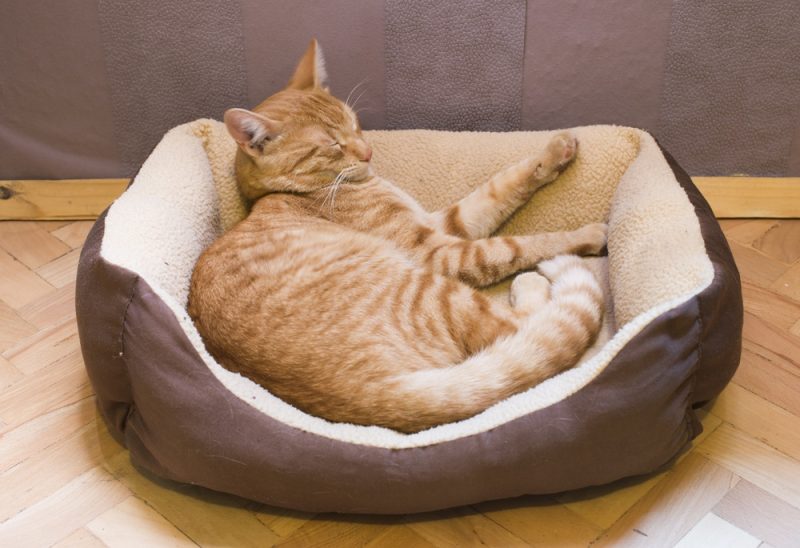
4. Sweating
Unlike humans, cats don’t sweat over their whole bodies. They only have sweat glands in their paws. However, while cats can sweat out excess heat through their paws, they don’t release enough moisture to cool themselves down like we do.

The 5 Tips to Help Your Cat Cool Down
Regulating their body temperature is something that all cats can do, and they’re usually quite good at it. If they get too warm, they’ll move to a shady spot or drink water. There are times, however, when they need help to cool down properly, or they risk developing heat stroke.
Here are a few tips for hot summer days to help your cat stay cool.
1. Keep the House Cool
We all like to take advantage of the AC when it’s hot, and your cat can benefit from the cool air, too. You don’t need to make the house colder than you would normally; the temperature that’s comfortable for you is typically perfect for cats. As long as your home is cooler than outside, your cat won’t be at risk of overheating.
If you don’t have air conditioning or in the case of a power outage, you can cool the house a bit by closing the curtains or blinds on windows that are facing the sun. It won’t be as effective as AC, but you’ll stop the sunlight from heating the inside of your home.
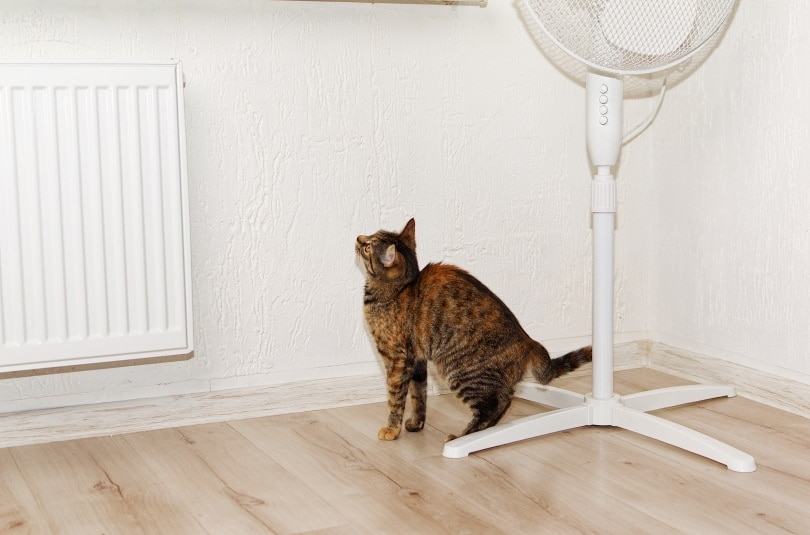
2. Keep Them Indoors
As a rule of thumb, if it’s too hot for you outside, it’s likely too hot for your cat too. If you have an outdoor cat or walk your cat on a leash, keep them inside for the hottest part of the day. This way, you’ll be keeping them away from the worst of the weather.
Your outdoor cat is likely to retreat indoors if they do get too warm outside, but it’s far safer to only let them out once it’s cooled down. This can also save their paws from burning on hot tarmac or concrete if you live in an industrialized area.
3. Provide Clean Drinking Water
Free access to clean drinking water is essential throughout the year, but it’s even more important during hot summers. Cats will often drink more when they’re hot in order to cool down, and they’re likely to go through the contents of their water bowl more quickly than usual.
Keep an eye on it and top it up whenever it’s getting low to ensure your cat always has access to clean water. There are also outdoor bowls that are designed to keep water cool for hours if you want to provide a refreshing drink for any of the stray cats in your neighborhood.
Making sure your cat drinks enough water can require a little creativity and the right fountain choice! A nicely made product like Hepper's Stainless Steel Cat Water Fountain will encourage your cat to stay hydrated by providing fresh, flowing water. We particularly like this model because it's easy to clean and offers excellent triple filtration, multiple flow modes, and a large capacity.
At Catster, we’ve admired Hepper for many years and decided to take a controlling ownership interest so that we could benefit from the outstanding designs of this cool cat company!Our Favorite Cat Water Fountain
4. Provide Shady Areas
Your cat isn’t the only one likely to suffer in the heat; the stray cats in your neighborhood will, too. While your pet can run indoors when they get too hot, stray cats are more likely to keep to themselves. Along with leaving a water bowl outside, you can also ensure there are shady areas in your yard. These will give feral cats—or even your neighbor’s wandering feline—a place to sit to recover from the heat before they continue on their way.
5. Use a Cool Damp Towel
If you live in an area that gets extremely hot in summer and your cat was outside too long or a power outage means you don’t have AC, you can try using cool, wet towels. Be cautious with this idea, though. You need to use cool water, as ice-cold water can have the opposite effect and slow how fast your cat cools down.
While your cat might not like this tip much, you can place the cool towels on your cat’s neck, chest, and groin to cool them down.
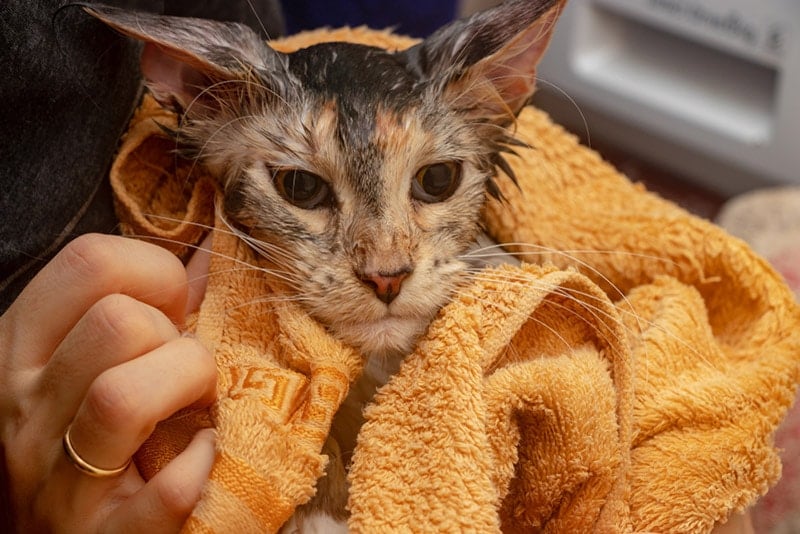

Conclusion
Sunbathing on a summer day is something that both humans and cats enjoy doing. It’s not the only thing that we have in common, though. Cats are also prone to becoming overheated if they’re out in the sun for too long.
Keep an eye out for signs like panting to know when your cat is too hot. You can cool them down by keeping them indoors with the AC, supplying plenty of cool drinking water, and putting cool, damp towels on their body.
Featured Image Credit: Masarik, Shutterstock

